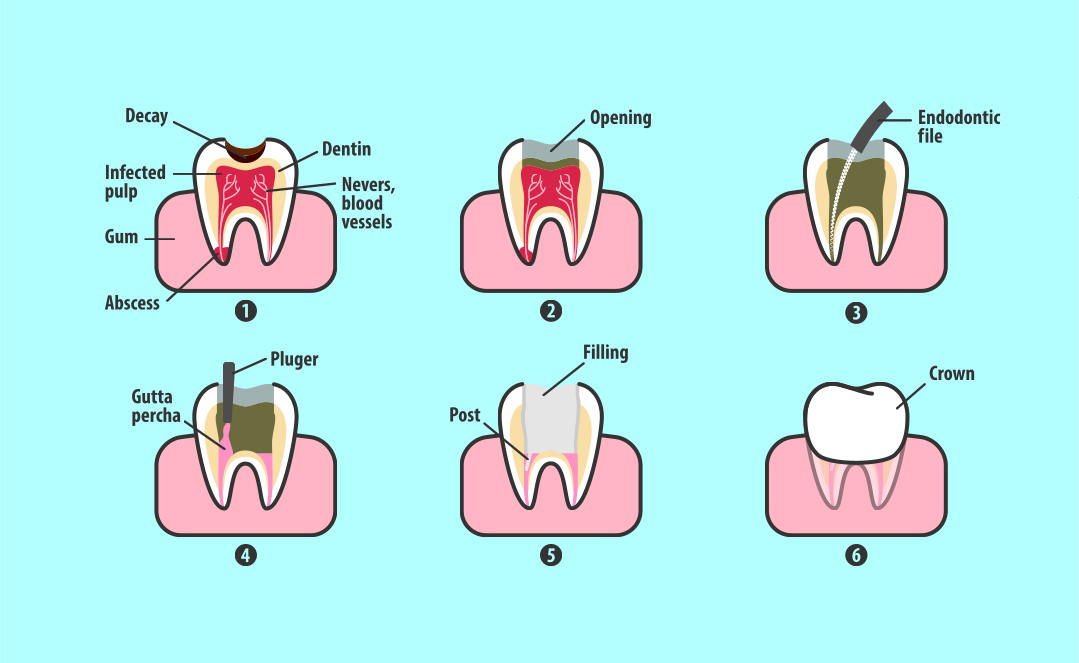Root Canal Treatment
Endodontic TreatmentWhat to expect
A root canal will usually take several visits to complete and the appointments will be longer than other dental procedures like fillings and cleans. This is because the anatomy inside a tooth is unique and needs the appropriate time as well as our expertise to disinfect the tooth in the right way. Front teeth are usually easier (and hence need less time) to root treat, while back teeth need more time. Including the initial assessment, the treatment may take 2-4 appointments. Excluding the shorter initial assessment, the appointments may need between 60 and 120 minutes.
- At the first appointment, an assessment is done to figure out what is wrong with the tooth. Usually, root canal treatment is done where there is a sore, broken and infected tooth.
- After examining and x-rays, a decision will be made on whether the tooth should be removed or saved with a root canal. The condition of the tooth as well as its value compared to the rest of the teeth are taken into account, along with finances and availability of time to see us to do the root canal.
- An estimate in cost and amount of appointments will be discussed.
- If there is enough time, the very initial part of the root canal treatment can be done to relieve pain. Alternatively, your dentist may prescribe some antibiotics to help fight the infection.
- In the subsequent appointment(s), the tooth will be numbed, isolated from the rest of the teeth with a rubber dam, and the inside of the tooth will be disinfected
thoroughly and sealed with a root filling.- A filling may be needed before the root canal is started to fix the tooth from being broken or decayed.
- A temporary filling will be placed on the tooth when subsequent appointments are needed to prevent the tooth getting infected again.
- Once done, the tooth will need to be monitored to ensure the tooth is healthy and stable. This will mean an additional x-ray of the tooth will be taken on top of the regular check-up x-rays during your annual check-ups with us.
- In the short term, a crown is needed on the tooth to reinforce it and ensure the tooth is in a condition to last a long time. Generally, back teeth with root canals are always recommended needing crowns, while front teeth sometimes need crowns depending on their condition.
Sometimes teeth have complicated anatomy which makes it hard to do a root canal to the standard that is needed. This may be picked up when the tooth is x-rayed or when the dentist starts the root canal. In these circumstances, a decision will be made to refer the subsequent root canal appointments to a root canal specialist who has the necessary skills to finish the job.
In Summary…
- Root canals are a great option in saving teeth that require more than a standard filling can fix.
- In most circumstances when a root canal is discussed, the option of extracting the tooth is the alternative. The pros and cons will be discussed by your dentist
- A root canal involves keeping the tooth, removing the nerve inside the tooth, and placing a root filling on the tooth
- It takes more than one appointment to do to ensure the tooth is adequately treated and may need a referral to a root canal specialist if it is difficult.
- Expect the tooth to need a crown in the short term after the root canal is done to ensure the tooth stays strong.

